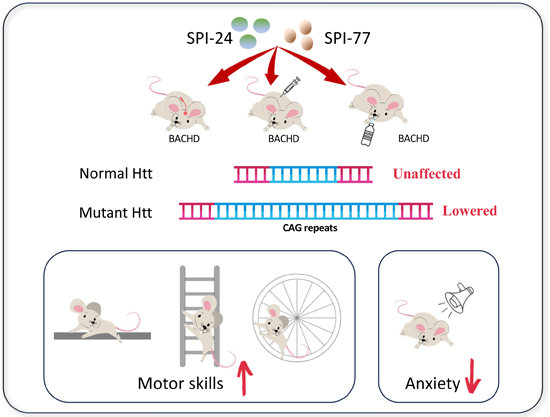We have a long-term interest in understanding the mechanisms underlying rapid transcription activation of pro-inflammatory genes by the transcription factor NF-κB. Our studies revealed that this involves the presence of the transcription machinery on the promoters before activation (1) and proximal promoter pausing mediated by the transcription elongation factor Spt5, the large subunit of DSIF (2). Upon activation by NF-κB, re-initiation and elongation are major targets for NF-κB regulation (1,2). Notably, the recruitment of DSIF-Pol II is mediated by promoter regulatory elements enabling selective regulation (2-5). We further demonstrated that in a subset of NF-κB target genes, in particular negative feedback regulators, DSIF also coordinates elongation with mRNA splicing/export, revealing an alternative pathway for co-transcriptional mRNA processing (6-8). Addressing the importance of Spt5 in transcription elongation dynamics, we unexpectedly uncovered its role in the early stages of transcription, supporting promoter-escape, chromatin modifications and TFIID recruitment, which are all central for re-initiation and rapid induction of NF-κB response genes (9).

Using a high throughput drug screening (HTS), we identified the first Spt5-Pol II inhibitors called SPIs. SPIs mimic Spt5 knockdown effects, uncover novel regulatory functions of Spt5 and selectively inhibit transcription of expanded repeat mutant huntingtin gene of Huntington’s disease (HD) (6). Recent data from an HD animal model show the great potential of SPIs as HD therapy as these compounds alleviate disease symptoms and delay disease progression (10). The therapeutic potential of these compounds against other expanded repeat neurodegenerative disorders is currently being investigated.
References
1. Ainbinder, E., Revach, M., Wolstein, O., Moshonov, S., Diamant, N. and Dikstein, R. (2002) Mechanism of rapid transcriptional induction of tumor necrosis factor alpha-responsive genes by NF-kappaB. Mol Cell Biol, 22, 6354-6362.
2. Ainbinder, E., Amir-Zilberstein, L., Yamaguchi, Y., Handa, H. and Dikstein, R. (2004) Elongation inhibition by DRB sensitivity-inducing factor is regulated by the A20 promoter via a novel negative element and NF-kappaB. Mol Cell Biol, 24, 2444-2454.
3. Amir-Zilberstein, L., Ainbinder, E., Toube, L., Yamaguchi, Y., Handa, H. and Dikstein, R. (2007) Differential regulation of NF-kappaB by elongation factors is determined by core promoter type. Mol Cell Biol, 27, 5246-5259.
4. Amir-Zilberstein, L. and Dikstein, R. (2008) Interplay between E-box and NF-kappaB in regulation of A20 gene by DRB sensitivity-inducing factor (DSIF). The Journal of biological chemistry, 283, 1317-1323.
5. Bahat, A., Lahav, O., Plotnikov, A., Leshkowitz, D. and Dikstein, R. (2019) Targeting Spt5-Pol II by Small-Molecule Inhibitors Uncouples Distinct Activities and Reveals Additional Regulatory Roles. Mol Cell, 76, 617-631.
6. Bahat, A., Lahav, O., Plotnikov, A., Leshkowitz, D. and Dikstein, R. (2019) Targeting Spt5-Pol II by Small-Molecule Inhibitors Uncouples Distinct Activities and Reveals Additional Regulatory Roles. Mol Cell, 76, 617-631 e614.
7. Diamant, G., Amir-Zilberstein, L., Yamaguchi, Y., Handa, H. and Dikstein, R. (2012) DSIF restricts NF-kappaB signaling by coordinating elongation with mRNA processing of negative feedback genes. Cell reports, 2, 722-731.
8. Diamant, G., Eisenbaum, T., Leshkowitz, D. and Dikstein, R. (2016) Analysis of Subcellular RNA Fractions Revealed a Transcription-Independent Effect of Tumor Necrosis Factor Alpha on Splicing, Mediated by Spt5. Mol Cell Biol, 36, 1342-1353.
9. Diamant, G., Bahat, A. and Dikstein, R. (2016) The elongation factor Spt5 facilitates transcription initiation for rapid induction of inflammatory-response genes. Nat Commun, 7, 11547.
10. Bahat, A., Itzhaki, E., Weiss, B., Tolmasov, M., Tsoory, M., Kuperman, Y., Brandis, A., Shurrush, K.A. and Dikstein, R. (2024) Lowering mutant huntingtin by small molecules relieves Huntington's disease symptoms and progression. EMBO Mol Med, 16, 523-546.
